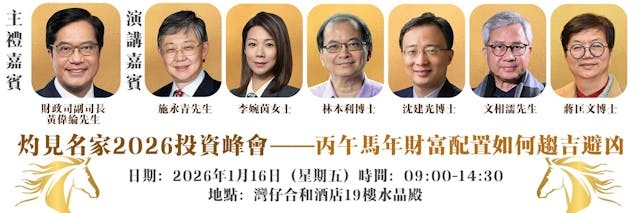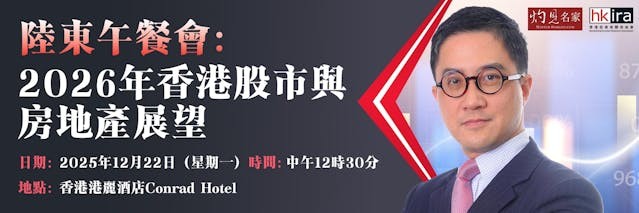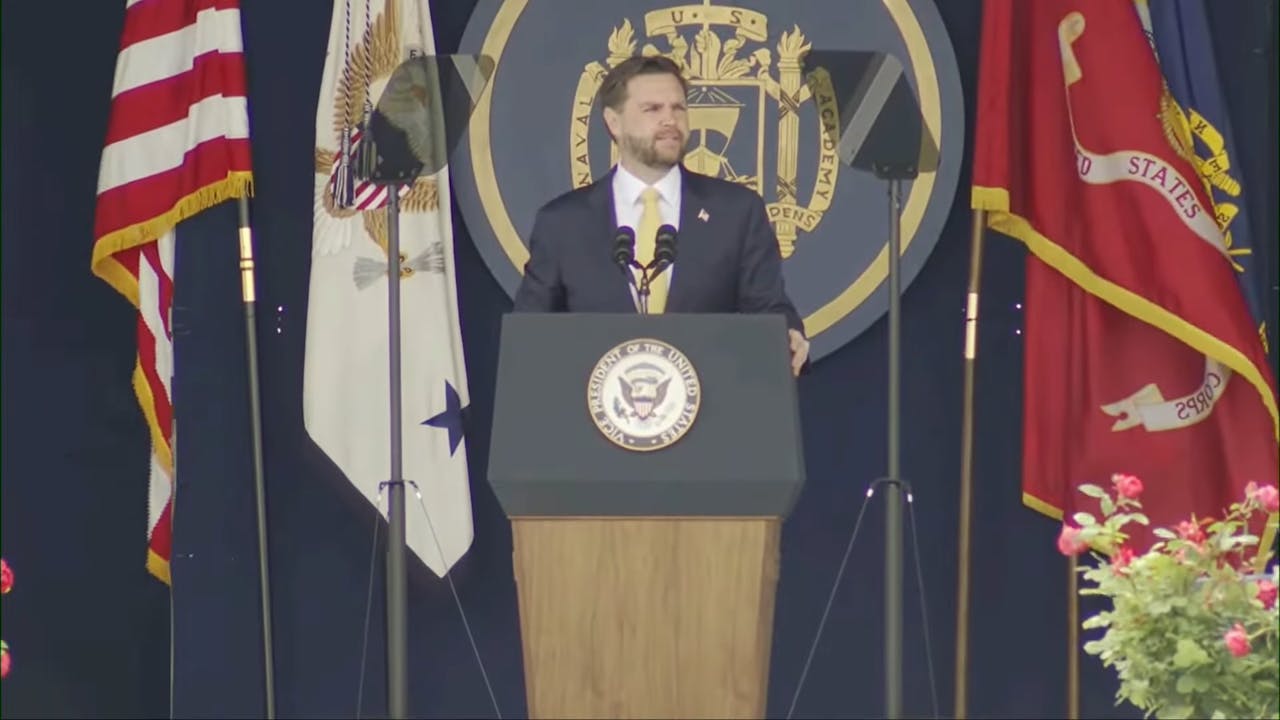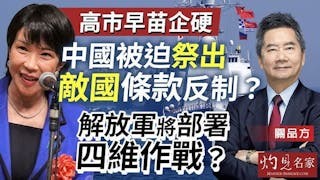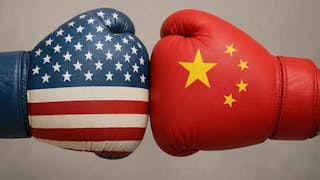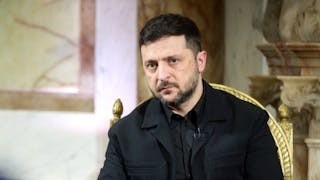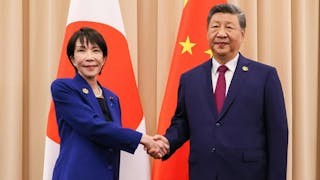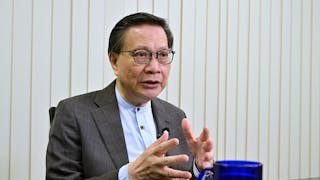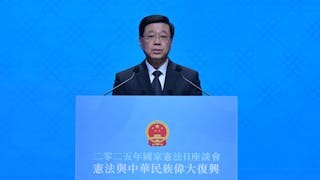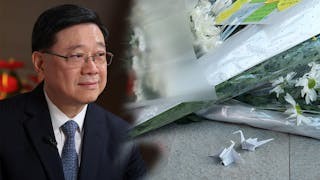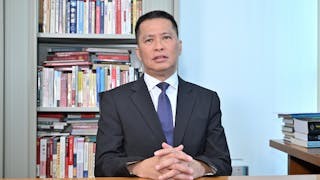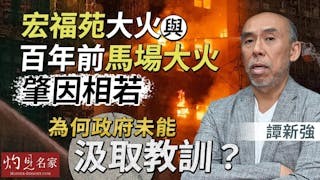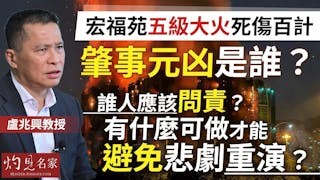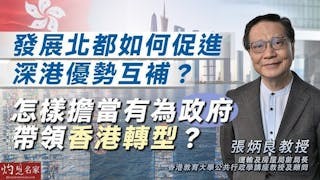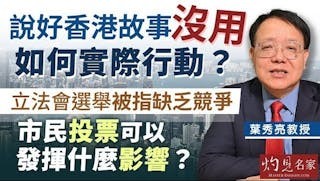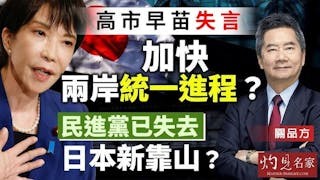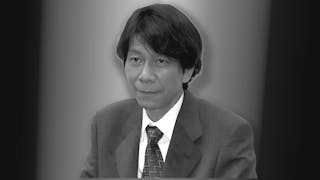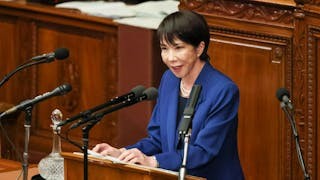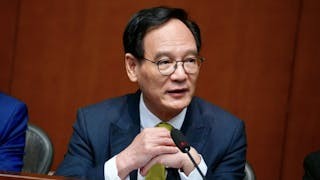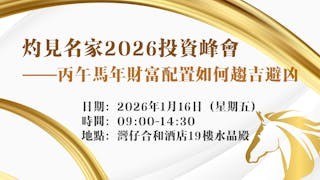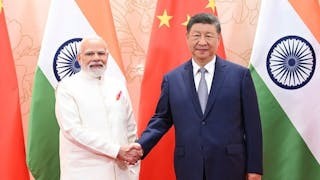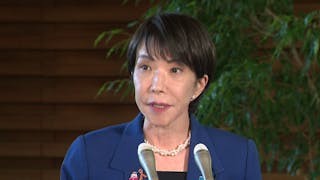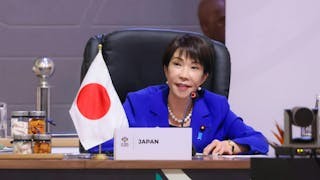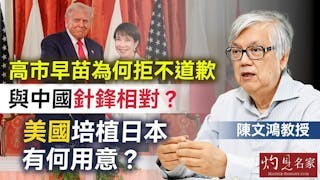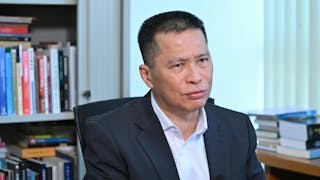美國副總統萬斯在西點軍校向美國海軍學院2025年屆畢業生發表畢業致辭,概述了他對美國現時新外交格局的看法,從他的言論,可以反映特朗普2.0的外交政策正走向新現實主義。
首先,萬斯警告,美國已經進入了一個「非常危險的時代」,儘管他沒有用上「多極化」這個詞,但可以理解世界正在走向多極化的格局。
萬斯補充指美國總統特朗普最近到訪卡塔爾、沙特阿拉伯和阿聯酋,標誌着「數十年來外交政策的結束」,打破了美國開國先賢們的創舉。萬斯承認蘇聯解體後,美國的世界霸主地位正受到其他國家的挑戰,但他認為美國人不相信有任何能夠與美國爭霸的外國強權。
其次,萬斯批評了美國以往的外交政策,認為美國若真的要干涉任何國家的事務,這種干涉就必須是有效的。
第三,萬斯認為,經濟融合和全球化不會使包括中國在內的發展中國家變得更像美國,也不會帶來和平。
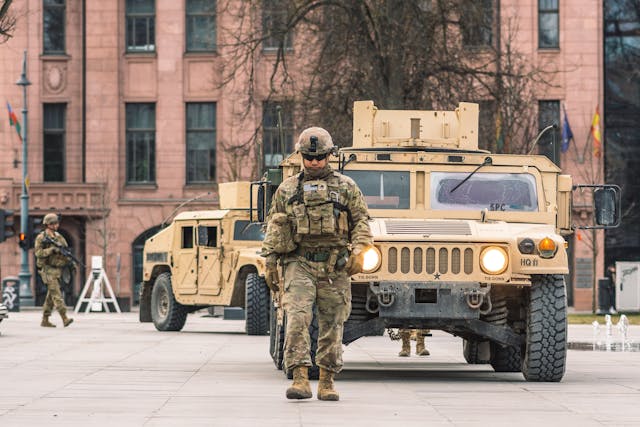
萬斯批前幾任總統過於理想主義
第四,萬斯批評了前幾任美國領導人反覆強調的理想主義宗旨,即「讓世界不分文化或國家,向着一套統一的、世俗的、普世的理想靠攏,而那些不想靠攏的人,我們的政策制定者就會不擇手段地強迫他們這樣做」。
萬斯承認了美國先前向世界其他地區推廣西方式民主的外交政策是失敗的。若是如此,那麼特朗普2.0撤回對美國民主和跨國組織的支持就不難理解。
第五,萬斯認為美國必須回歸「基於現實主義和保護我們核心國家利益的戰略」,以扭轉美國先前錯誤的外交政策。從中美貿易談判的相互讓步,降低了彼此關稅,但特朗普政府仍然主張向包括中國在內的許多國家徵收關稅的政策,便可以理解美國外交政策的轉變。
第六,萬斯強調,美國使用軍事力量時必須有效、準確地使用,就像美軍對付攻擊美國艦艇的胡塞武裝分子一樣。
第七,美國雖然堅持威懾政策,但這種威懾是有原則和有「紅線」的。換句話說,美國新的外交政策是具有目的,以擁有優勢武力、先進武器和最優秀人才為重點。
第八,萬斯將中國、俄羅斯和其他新興國家列為「嚴重威脅」,指這些國家決心在從通訊頻譜到低軌道衛星、供應鏈,以至的通訊基建設施等各個領域擊敗美國,因此美國在派兵參戰時,必須有效地使用正確的工具。
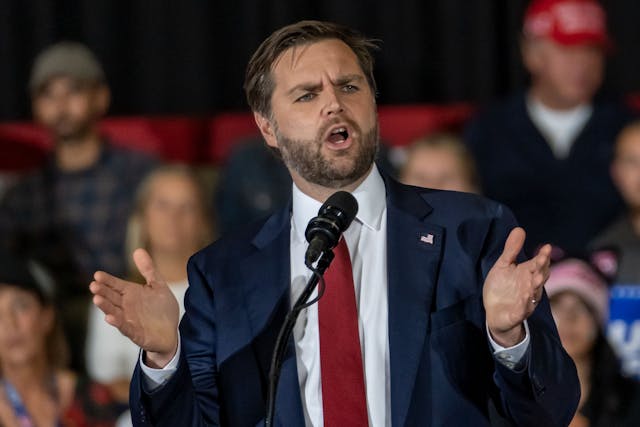
利用尖端科技維持領先優勢
第九,為維持美國的技術優勢,特朗普政府正投資創新,並簡化武器採購流程,認為利用尖端科技是美國實現技術領先和完備性所必須的。
第十,萬斯呼籲海軍,當然還有整個軍隊,在美國的世界霸權地位已經受到挑戰的新時代,需要部署新裝備、新系統和新技術,因此美國必須發展現代化,這不僅包括戰術和工具,還包括更好的教育和軍事任務,並提醒軍官要有犧牲生命的準備。
過去一段長時間,特別是蘇聯解體後,美國外交政策主要是向世界其他地區推廣美式民主和價值觀,但這種思維已被特朗普政府視為過時,特別是一些國家拒絕吸收或採納美式民主和價值觀。蘇聯解體後,美國領導階層認為軍事干預一些國家是必要的,但到了特朗普2.0,這種做法卻已經無效。
萬斯的觀點揭示了美國外交政策的轉變,並強調了適應快速變化的全球格局是十分重要。他強調美國必須重新調整戰略,將重點放在核心國家利益上,而不是推行收效往往有限,且削弱美國實力的大規模國家建設活動。
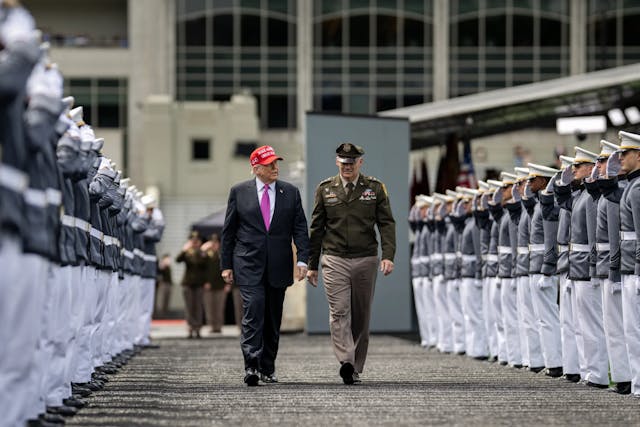
萬斯強調有效、精準的軍事干預是非常重要,主張有紀律地使用武力,保護美國利益,避免不必要的糾纏。這種戰略實用主義標誌着美國脫離了先前影響其外交活動的理想主義願景。
在應對中國和俄羅斯等新興大國的威脅時,萬斯強調需要採取以優勢武力和清晰戰略為外交政策的主軸,因此美國必須有效應對這些威脅並維護其核心利益。
強調美國優先政策 扭轉衰落頹勢
萬斯的演講重點是他看到了一個以美中俄為主導的「三極世界」,為應對新挑戰,美國有必要提升軍事技術。換言之,特朗普2.0將「美國優先」政策提升到極致,包括對等關稅、將格陵蘭納入美國勢力範圍的願景,以及重新重視美國航運投資等,都顯示他迫切地要扭轉美國衰落的頹勢。
然而,另一個看待中國的角度或許被忽視了;也就是說,19世紀40年代至20世紀40年代,中國作為一個弱國,可能不僅具有追趕西方的地緣政治心態,而且將軍事現代化視為與秦朝修築長城相呼應的必由之路,以防禦外來勢力。中國現代化的防禦層面,包括軍事和經濟層面,或許被許多視其為「威脅」的人所忽視。
萬斯的演講是美國外交政策新現實主義的一個很好的指標。美國對世界上任何其他國家的干預都必須比以前更有效、更有針對性;而美國重新強調發展先進技術表明華盛頓認為對中俄兩國同時採取遏制和接觸(或對中俄採取封閉政策)是美國特朗普2.0新外交政策的體現。
Toward New Realism in US Foreign Policy
When US Vice President JD Vance delivered a keynote address at the US Naval Academy’s 2025 Commissioning Ceremony, he outlined key features of the new US foreign policy, new features that can perhaps be regarded as new realism in the development of US foreign policy under the second Donald Trump administration.
While the first part of his speech congratulated the graduates of the Naval Academy, the second part delineated his thoughts on US foreign policy under the Trump administration (see: Transcript of JD Vance’s Class of 2025 Commissioning Ceremony speech – Capital Gazette).
First and foremost, Vance said that the US has entered a “very dangerous era,” meaning that he realized the world is now going into a multipolar world, albeit he did not use the term multipolar. Vance added that President Trump’s recent visit to Qatar, Saudi Arabia and the United Arab Emirates signified “the end of a decades long approach in foreign policy” that he thought was “a break from the precedent set by [US] founding fathers.” Vance admitted that the US supremacy in the world is now challenged by other countries following the collapse of the former Soviet Union, adding “for a brief time, we were a superpower without any peer.” But the Americans, according to Vance, did not believe that any foreign nation could rise to compete with the USA.
Second, Vance criticized the previous US foreign policy as Washington “had a long experiment in [its] foreign policy that traded national defence and the maintenance of [US] alliances for nation building and meddling in foreign countries affairs, even when those foreign countries had very little to do with core American interests.” He added that what the Americans are seeing is a “generational shift in policy with profound implications.” Specifically, if the US does intervene in any country’s affairs, such intervention will have to be effective.
Third, Vance debunked the myth that economic integration would make other countries, like China, more and more like the US. He remarked that “too many of us believe that economic integration would naturally lead to peace by making countries like the People’s Republic of China more like the US.” In short, Vance believes that economic integration and globalization would not make developing countries, including China, more like the US. Nor did he think that such economic integration would lead to “peace.”
Fourth, Vance criticized the previous US leaders who harped on an idealistic theme of making “the world converge toward a uniform set of bland, secular, universal ideals, regardless of culture or country, and those that didn’t want to converge, well, our policy makers would make it their goal to force them by any means necessary.” It is interesting to observe that Vance is a realist pointing to the failure of the previous US foreign policy of promoting western-style democracy to other parts of the world. If so, it is understandable why the second Trump administration has withdrawn its support of pro-democracy and cross-national organizations in the US.
Fifth, Vance maintained that the Trump administration has reversed the previous mistaken foreign policy adopted by the US government. The US, according to Vance, must return to “a strategy grounded in realism and protecting our core national interests.” As such, it is understandable why the Trump administration has advocated a reciprocal tariff policy toward many countries, including China, although recently both Washington and Beijing have made mutual concessions to lower their reciprocal and retaliatory tariffs.
Sixth, Vance has asserted that when US military power is used, it must be utilized effectively and accurately, just like how the US forces moved against the Houthis who attacked the American ships.
Seventh, while the US maintains its deterrence policy, such deterrence represents a “principled foreign policy” with “a red line.” In other words, the new US foreign policy is a principled one “with purpose, with superior force, with superior weapons and with the best people anywhere in the world.”
Eighth, Vance named China and Russia and other emerging nations as “serious threats” that are “determined to beat” the US “in every single domain, from spectrum to low Earth orbit to our supply chains and even our communication infrastructure.” As such, the US must use the “right tools” effectively when “we send our troops to war.”
Ninth, to maintain the US technological edge, the Trump administration is investing in innovation and streamlining weapons acquisition. Utilizing the cutting-edge technology will be a must in the US drive toward the achievement of its technological edge and sophistication.
Tenth, Vance appealed to the navy, and of course the whole military, to deploy new equipment, new systems and new technology during the new era in which the US supremacy in the world has already been challenged. As such, the US must develop its modernization, which embraces not just tactics and tools but also better education and better military mission in which the military officers may sacrifice their lives.
The main points as discussed in Vance’s speech point to a new pattern of realism in US foreign policy. In the past, especially for many years after the collapse of the former Soviet Union, the US adopted a foreign policy of promoting US-style democracy and values to other parts of the world, but such foreign policy is now seen by the Trump administration as being outdated, especially as some countries refuse to absorb or adopt such democratic system and values. After the collapse of the former Soviet Union, the US leadership at least prior to the second Trump administration saw military intervention in some countries as necessary, but to the second Trump administration this approach was ineffective. As Vance has maintained, military intervention has to be precise, effective and targeted.
Vance's perspective reveals a shift in the US foreign policy, underlining the importance of adapting to a rapidly changing global landscape. He emphasized the necessity for the US to recalibrate its strategies and to focus on its core national interests, rather than engaging in extensive nation-building exercises that often yield limited results and dilute American power.
The call for a realistic approach in international relations aligns with Vance's critique of previous administrations' policies. He underscored the importance of effective and precise military interventions, advocating for a disciplined use of force that protects American interests without unnecessary entanglements. This strategic pragmatism marks a departure from the idealistic visions that have previously influenced US foreign engagements.
Moreover, Vance's remarks highlight the increasing significance of technological innovation in maintaining the US's competitive edge. The Trump administration's investment in advanced military technology and streamlined weapons acquisition processes aim to bolster the country's defense capabilities and to ensure its superiority in critical domains.
Vance also highlighted the importance of adapting to this new era by investing in technological advancements and streamlining weapons acquisition processes. His remarks underscore a shift towards a more pragmatic and strategic approach in U.S. foreign policy, emphasizing the need for precision in military interventions and the safeguarding of core national interests. This represents a departure from the more idealistic and expansive strategies of previous administrations, favoring a focus on practical and measurable outcomes. The second Trump administration’s advocacy for a reciprocal tariff policy and investment in technological innovation further highlight Washington’s commitment to maintaining and enhancing U.S. supremacy in an increasingly competitive global landscape.
Vance emphasized that maintaining the technological edge is crucial for the US to stay ahead of its competitors. By focusing on innovation and modernization, the Trump administration aims to enhance the efficiency and effectiveness of the military, ensuring that it is well-equipped to face any emerging threats.
The new focus on “modernization,” encompassing new equipment, systems, and education, is crucial for adapting to a world where US dominance is no longer uncontested. In addressing the threats posed by emerging powers like China and Russia, Vance stressed the need for a principled foreign policy backed by superior force and strategic clarity. He acknowledged the determination of these nations to challenge US supremacy across various spheres, from low Earth orbit to global supply chains. Therefore, the US must employ the right tools and strategies to effectively counter these threats and safeguard its interests.
The shift toward a tripolar world, led by the US, China, and Russia, necessitates a deeper understanding of global dynamics and the implementation of policies that reflect this new reality. Vance's vision of a more realistic and focused US foreign policy is indicative of the broader changes taking place within the Trump administration, as it seeks to navigate the complexities of a multipolar world.
Deterrence, however, has a “red line” as Vance emphasized.
Most importantly, Vance’s speech showed that he sees a tripolar world led by the US, China and Russia, albeit he did not use the term tripolar world. Under the circumstances in which US supremacy has been challenged, Vance calls for the need to improve military technology, and to utilize the most sophisticated technology in US modernization.
In a sense, Vance provided a critique of US foreign policy under the Joe Biden administration, although the Biden government had realized the challenges from China and Russia and decided to make investment in US infrastructure projects and developments. Yet, the second Trump administration has elevated the “American First” policy to the highest level. Reciprocal tariffs, the desire to make Greenland under the US sphere of influence, and the renewed emphasis on the investment in US shipping have all illustrated a sense of urgency on the part of the second Trump administration to stop or reverse the trend of US decline.
Vance’s remarks on China were interesting, seeing Beijing as a “serious threat” to the US.
Nevertheless, another perspective on China has perhaps been neglected; namely China as a weak country from 1840s to 1940s may have a geopolitical mentality of not only catching up with the West, but it also sees military modernization as a must parallel to the building of the Great Wall under the Qin dynasty to ward off and defence itself against the attacks from foreign forces. In other words, the defensive aspect of China’s modernization, including military and economic aspects, has perhaps been swept under the carpet by many people who see it as a “threat.” The question of perception remains a fascinating aspect of observation of how the US leaders see the rapid rise of China in recent years.
In short, Vance’s speech is a good indicator of the new realism of US foreign policy. If the late Henry Kissinger was regarded as a realist US foreign policy maker, JD Vance’s thinking has pointed to the features of new realism in which US intervention in any other country in the world has to be more effective and more targeted than before, the American First Policy is shown in the US reciprocal tariff policy toward other countries, the emphasis on US supremacy being challenged is a realization that the world is now tripolar with the rise of China and Russia, and the renewed stress on the development of advanced technology in the US is indicative of Washington’s perception that containment of and engagement with both China and Russia (or congagement policies toward China and Russia) are the new US foreign policies under the second Trump administration.
原刊於澳門新聞通訊社(MNA)網站,本社獲作者授權轉載。(原文按此)

